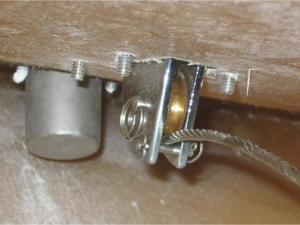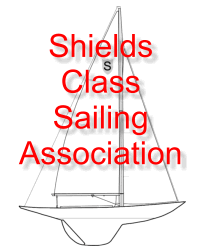Backstay Maintenance - From the Builder
Recently there have been several broken or damaged masts due to standing rigging failure. None of us want to spend money on a new mast or deck repairs or even worse, a persons injury. It’s important to do a yearly inspection of your wire rigging and swage fittings for excessive rust, cracks, kinks or even a broken strand. Don’t rely on your rigger to perform this inspection. Also, for those of us sailing in salt water, at the end of the season be sure to wash everything down with fresh water to reduce corrosion. For full details on how to inspect your standing rigging go to the frequently asked questions section on our website. As a good rule of thumb, if your standing rigging is over 15 years old, it should be replaced as preventative maintenance.
 Backstay Sheave on New Shields
Backstay Sheave on New ShieldsDon’t forget to also inspect the backstay pennant wire and assembly (the wire that goes though the aft deck). This can be a hidden weak point that you don’t know about until you are surfing downwind with your spinnaker up. We have noticed that some Shields have modified backstay pennant castings and sheaves which cause excess wear on the pennant wire. See the photo of the backstay sheave on a new Shields. If your assembly looks different, pay close attention to how yours works to make sure it’s functioning properly.
Now is a good time to inspect the pennant wire and the casting or sheave that it rides on. Release your backstay adjustment lines so you can pull most of the wire pennant above deck and inspect the wire for any broken or elongated strands. Then, climb into the aft air tank to inspect the nicropress fitting on the wire pennant. Also check the casting for wear and that the keeper pin is in the backstay casting. It is imperative your backstay casting have a keeper pin which prevents the wire from jumping the groove and cutting itself on the sheave or the casting.
Wendy J. Goodwin
Vice President
Cape Cod Shipbuilding Co.
























